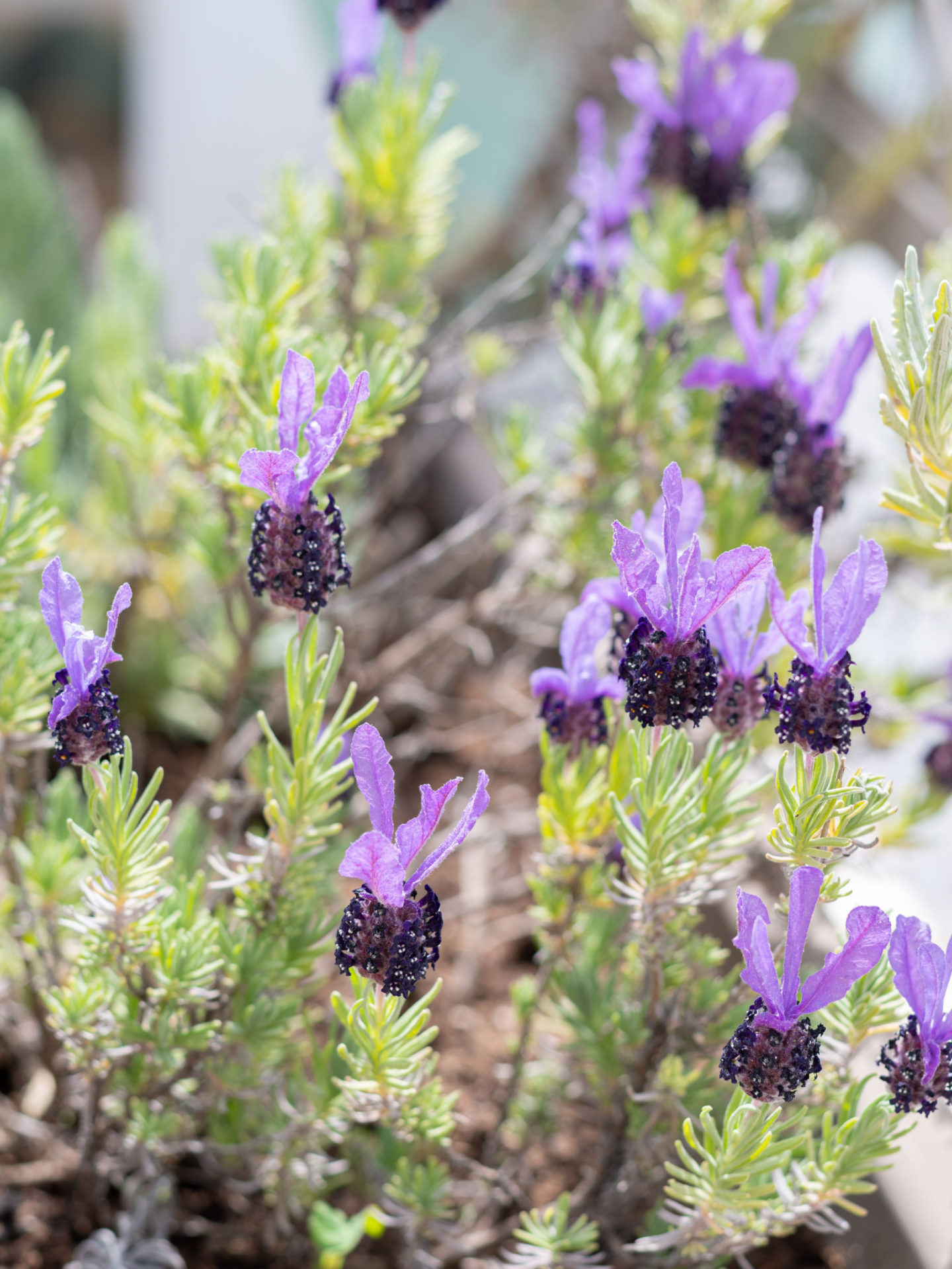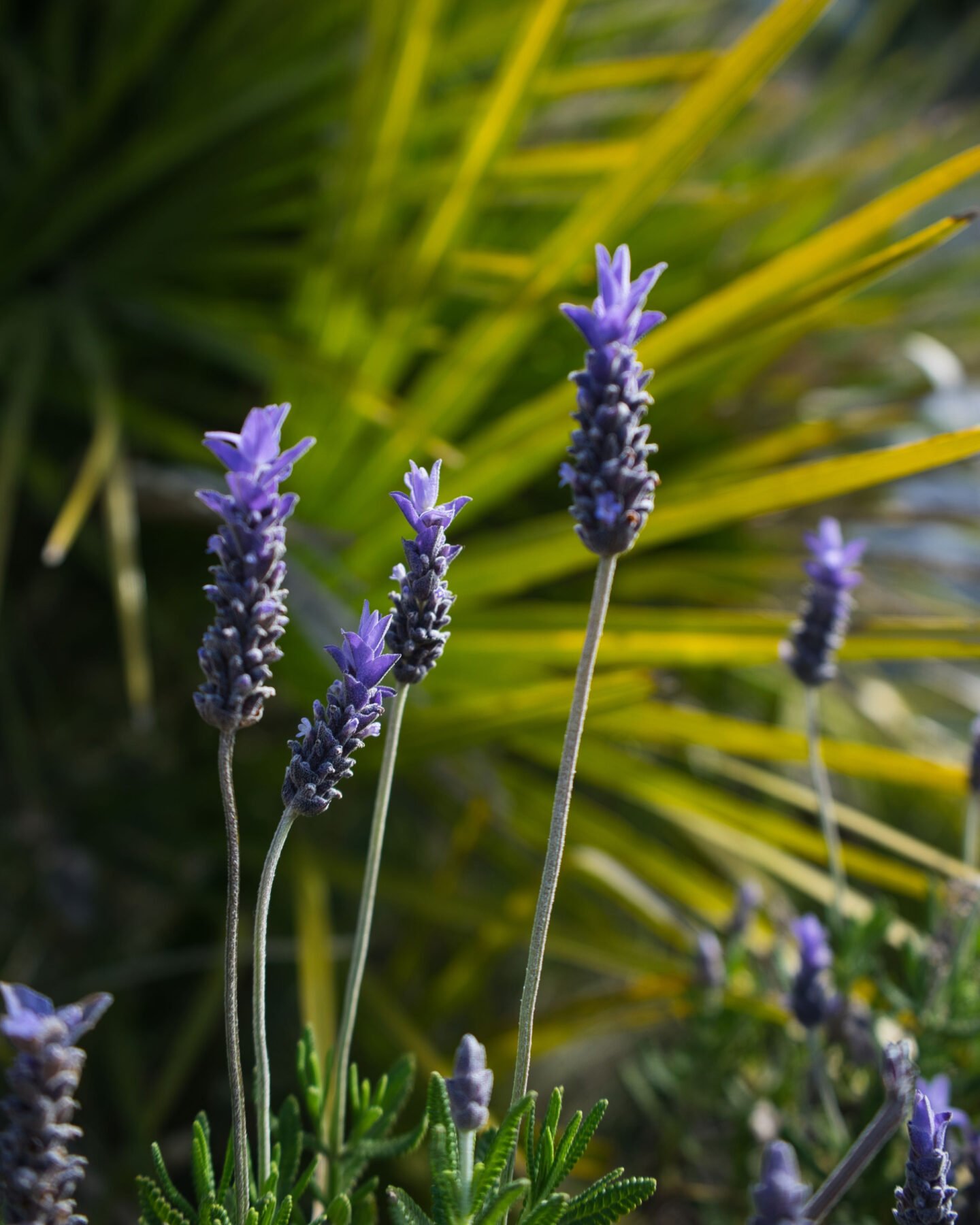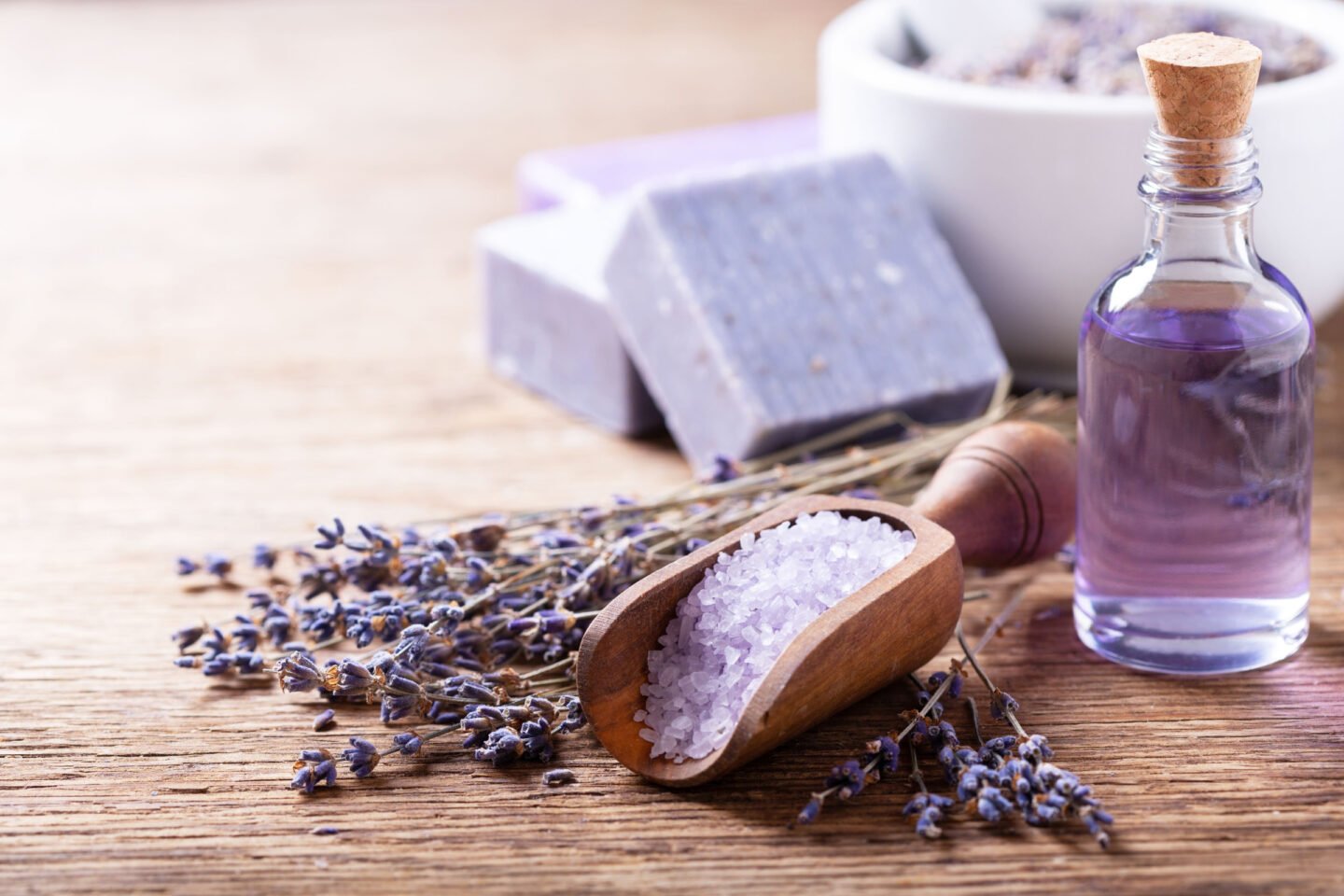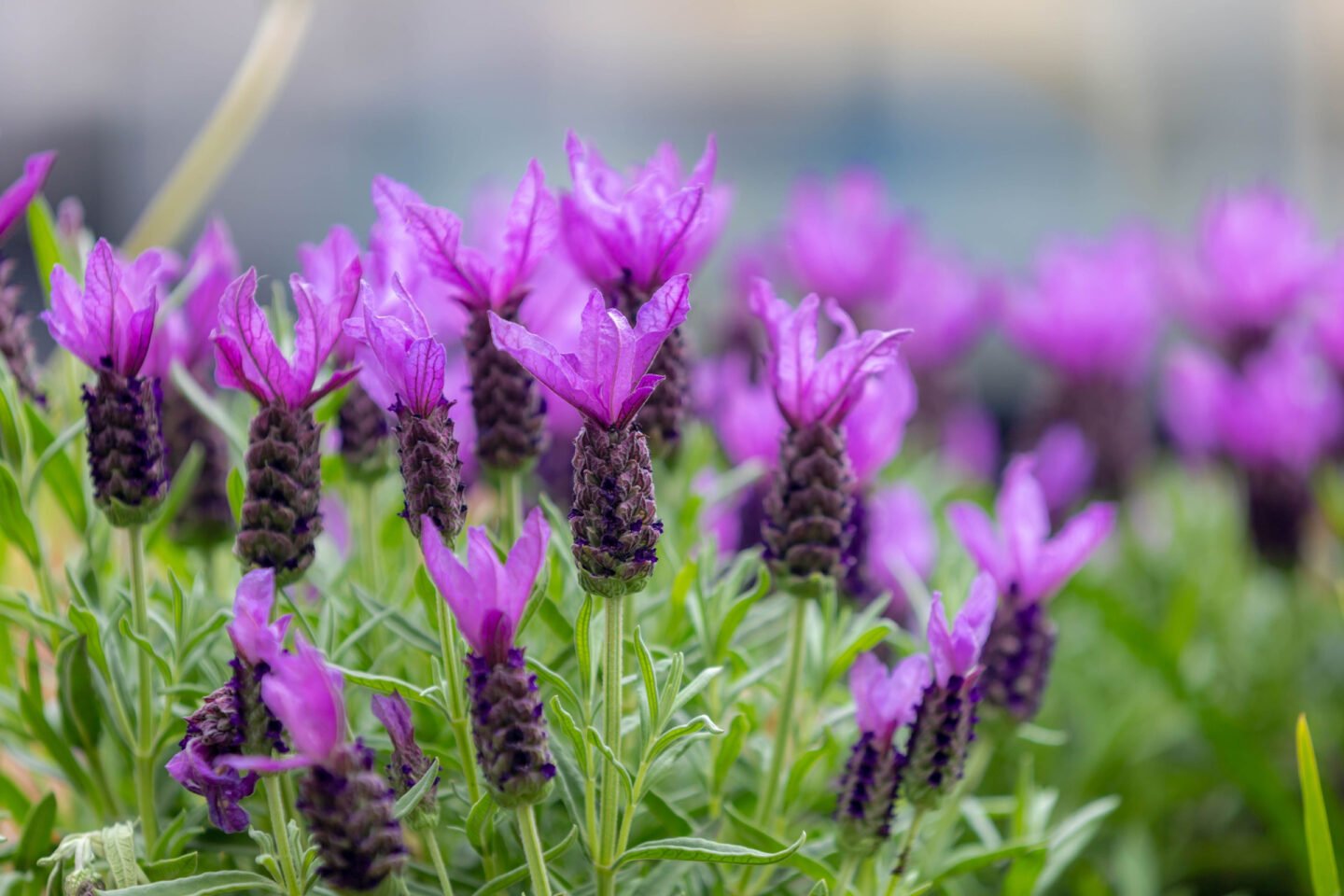Although they both belong to the same family, French lavender and English lavender are two different species and have different characteristics. The main difference between French lavender and English lavender is its size. French lavender grows taller, at around 4 feet, while English lavender grows to approximately 2 feet in height only.

English lavender also has a longer life span; it can live up to 15 years compared to French lavender’s 5-year life span. However, despite the shorter life span, French lavender blooms for longer than English lavender. Lastly, although there are only minor differences when you look at their flowers, English lavender has a deeper, stronger lavender scent.
Read on to learn all the differences and similarities between French lavender and English lavender.
Table of Contents
French Lavender vs. English Lavender: Differences and Similarities

Other Names
French lavender, scientifically known as Lavandula dentata or Lavanda de la brecha, is also called fringed lavender. The most famous lavender, Grosso, is a French hybrid lavender variety that grows 4 feet tall.
On the other hand, English lavender, which has the scientific name Lavandula angustifolia, is also called lavender, true lavender, garden lavender, narrow-leaved lavender, and common lavender. The most famous English lavender varieties are Hidcote, Jean Davis, Thumbelina Leigh, Buena Vista, Munstead, Betty’s Blue, and Royal Purple.
Origin
Although you might guess that French lavender grows locally in Provence, France, this plant is native to countries like Spain, North Africa, Greece, and other Mediterranean countries on the Mediterranean coast, the Arabian peninsula, and the Atlantic islands.
Likely, English lavender is native to Spain, Italy, France, Croatia, and other Mediterranean countries.
Leaves
Although you might not be able to tell it from afar, French and English lavender leaves are quite different. French lavender has tall branches that are covered with gray-green, silvery leaves that look like they have little teeth along the edges. In fact, the name "dentata" directly translates to "toothed."
On the other hand, the English lavender variety leaves are simple, without any fringe or serration. They appear needle-like, with two leaves growing from each node along the stem. Like French lavender, English lavender produces gray-green foliage.
Flower
Another distinct difference between these lavender plants is their flowers' appearance. French lavender boasts large, spike-shaped flowers that grow at the tips of the flower stalks. French lavender flower colors vary from purple to deep violet, white, and pink, depending on the variety.
On the other hand, the flower shoots of English lavender look more subtle, with small flowers spread out all over the flower head. Like French lavender, English lavender flowers’ colors vary from pink, white, and a vast shade of purple, from deep blue-violet to pale lavender shades.
Aroma

Although lavender plants are generally known to provide delicate, sweet, and herbal floral scents, the English variety takes it. English lavender offers a more potent aroma than the French lavender plant, making it the most commonly used variety when it comes to aromatics. On the other hand, French lavender offers a more subtle lavender scent but offers more piney and woodsy undertones.
Blooming Season and Growth Requirements
If you have plans to grow lavender plants, the best time to plant them is from April to May or in the late spring. Lavender loves the warmer climate and enjoys total sun exposure, especially when preparing to bloom. Once mature, your lavender plant starts to bloom in late spring or early summer until late summer.
If you want to plant lavender plants, it’s essential to avoid doing it in the winter as they are prone to root rot and do not grow well in wet soil. Moreover, although these are very low-maintenance plants, you must secure well-drained soil for your lavender plants. If you can’t find a good soil mix, you can add sand or pebbles to the soil to make it well-draining.
Although both produce excellent flowers, French lavender blooms longer than the English lavender plant.
Uses
Both French lavender and English lavender play a great role in the aromatics industry. The lavender scent is famous among essential oils, soaps, lotions, creams, bath bombs, and cosmetics. Due to English lavender’s strong aroma, it is more commonly used in perfumery and culinary.
However, you can use both French lavender and English lavender essential oils to treat headaches, stress, exhaustion, and insomnia. Lavender that has been dried also has active compounds that help treat acne, wounds, and eczema.
Other Well-Known Lavender Varieties

Although there are over 450 lavender varieties, here are among the most common and best lavender species, aside from English lavender (L. angustifolia) and French lavender (L. dentata):
- Lavandula stoechas - Also known as the Spanish lavender or butterfly lavender. This variety is often related to French lavender, as it is the Spanish term for it.
- Lavandula x intermedia - Also known as Lavindin or Fred Boutin lavender, this variety is a hybrid of L. angustifolia and L. latifolia, or Portuguese lavender.
- Lavandula latifolia - Also known as the Portuguese lavender, spike lavender, or broadleaved lavender.
- Lavandula multifida - Also known as Egyptian lavender.
Related Questions
The best way to tell them apart is by looking at their size, leaves, and flowers. French lavender grows taller, has toothed leaves, and has larger flowers than English lavender.
While both smell entirely fragrant, this boils down to personal preference. English lavender has a stronger lavender scent, while French lavender has more piney, woodsy, and herbaceous undertones.
Although English lavender is the most commonly used for getting a lavender scent, Lavandin, or Lavandula x intermedia, is the most fragrant lavender variety.
Due to its earthy tones, the purple flower of French lavender is best used for home fresheners and cleaning materials.

Leave a Reply